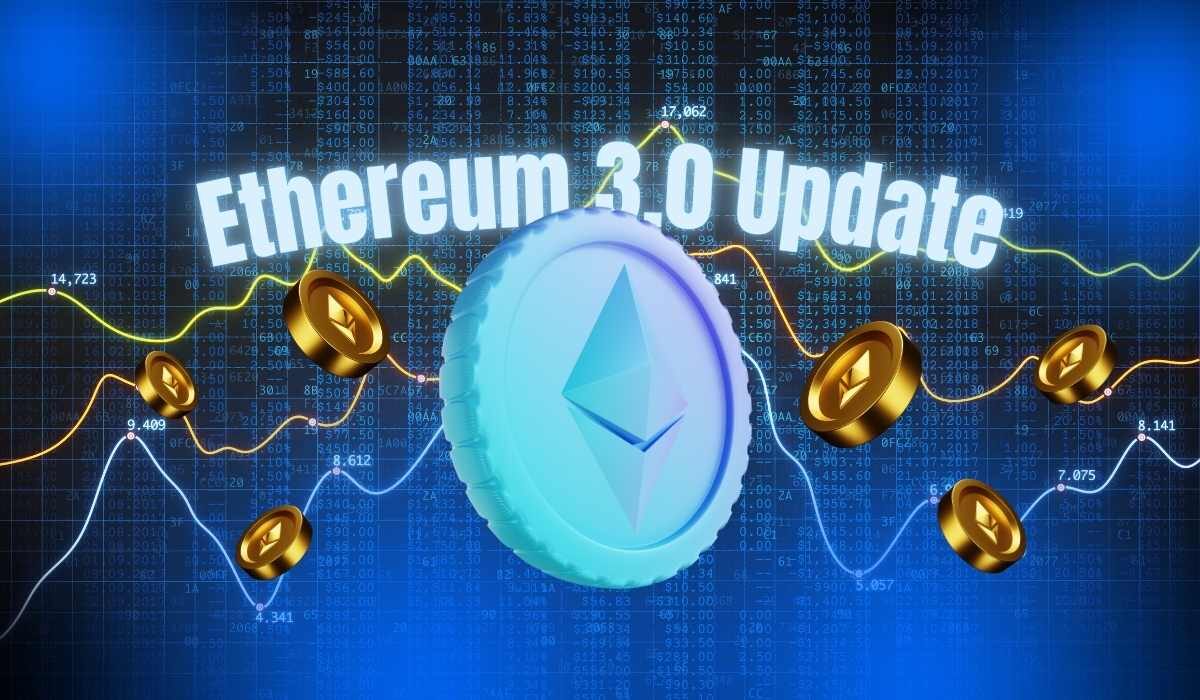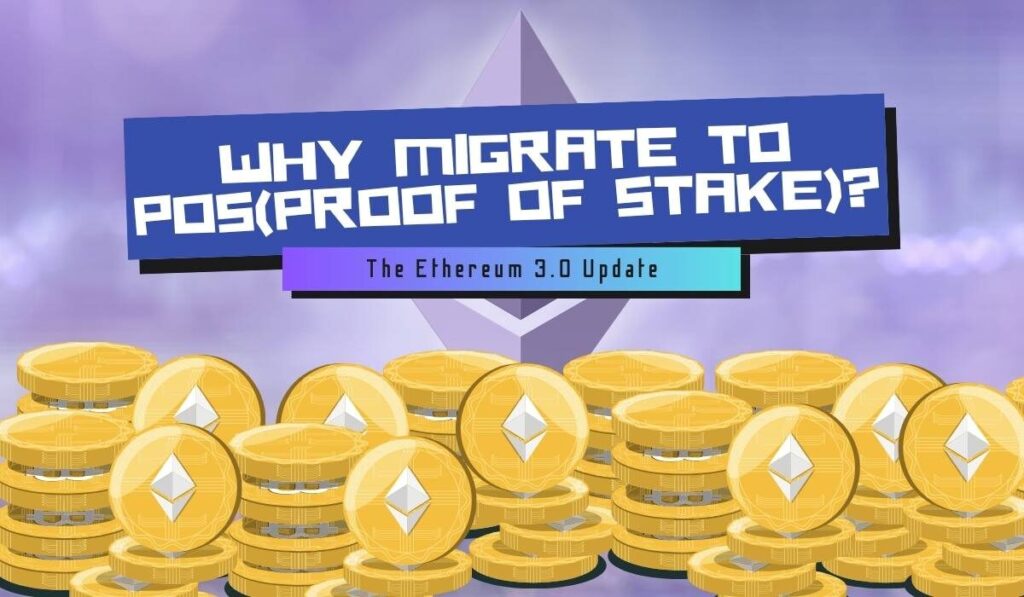Is Staking Still Profitable After The Ethereum 3.0 Update

It has been a long-standing question and concern among the users of the Ethereum blockchain whether the latest 3.0 update will render staking unprofitable. While there are technical factors that could cause this problem, it isn’t a profound issue.
The Ethereum 3.0 update is a long-awaited update. This update is expected to resolve the scalability issues of the existing Ethereum blockchain. At the moment, the Ethereum blockchain can handle a maximum of 15 to 20 transactions per second(TPS) based on the size of the transactions. With the 3.0 update, this value dramatically increases to 100,000. This is achieved through a mix of sharding and other scalability upgrades.
Since Ethereum has already migrated from the PoW(Proof of Work) verification method to the PoS(Proof of Stake) verification method, staking will stay an inevitable part of the Ethereum blockchain. However, growing concerns over over-centralization will mean that certain control protocols may become applicable on Ethereum staking to maintain its decentralized nature.
What Is Staking In Ethereum?
In staking, a user is locking up their ETH(Ether) in order to help secure and operate the Ethereum network. This is not without its own perks. By staking the Ether, that user will receive certain rewards. The amount of rewards is subject to changing parameters, which are decided based on the amount of ether staked, market parameters, and other network factors.
The users who stake ether can also earn rewards in the form of gas fees. Gas fee is the cost of executing a transaction on the Ethereum blockchain. The user who initiates or benefits from the transaction has to pay the gas fee; this gas fee is proportionately divided among the users who have staked ether for the functioning of the network.
Ethereum Staking And APY(Annual Percentage Yield)
APY is the value that determines how much reward a user will receive relative to the amount of Ether they have staked. This includes compounding rewards also. This value represents how much your staked Ethereum will grow over a period of one year, hence the name Annual Percentage Yield.
APY is not a constant value and will keep changing based on how much ether is staked on the network. To understand the concept, we have to understand how staking and the PoS system work together.
Why Migrate To PoS(Proof Of Stake)?
Ether was previously a minable coin. This means that there was a need for high computational power to process the blockchain transactions. The miners who provided this computational power received a portion of the mining reward. At a later stage, this mining was deemed to be energy-intensive and highly detrimental to the environment. There are actually five foundational reasons for the migration. They are:

|
1. Energy Efficiency |
While PoW required miners with sophisticated mining equipment, PoS requires only ether itself. This eliminated the power-thirsty equipment from the equation, thus making the process more environmentally friendly. |
|
2. Security Reinforcement |
In a PoS system, attacking and taking over the network requires a vast amount of ether. This renders the attack economically irrational, thus improving security and ensuring uptime. |
|
3. More Democratic Participation |
The transition from PoW to PoS made the decentralization and participation in the network’s operation and development more democratic. In earlier cases of PoW, where users had to have powerful equipment to join the mining team, in PoS, anyone with 32 ether or less can participate in the staking program. This enhanced the decentralized nature of the blockchain. |
|
4. Economic Efficiency |
Previously, miners had to sell their ether rewards to pay electricity bills and maintain equipment, which used to affect the network’s economics. By transitioning to the PoS system, the ether never leaves the system, maintaining its price stability in the long run. |
|
5. Future Development |
PoS allows for constant network updates, like sharding, which helps the network increase its scalability and thus its performance. |
What Comes In The 3.0 Update?
Ethereum 3.0 is a major update of the network. This update marks the evolution of the network in terms of scalability, enhanced decentralisation, and improved user experience. This update comes with key features such as full sharding, ultra-fast finality, and native support for smart-wallets and cross-chain messaging.
All of this lays the foundation for Ethereum to evolve into a powerful network that can process hundreds of thousands of transactions while keeping the cost/gas fee as minimal as possible. This will mark the entry of Ethereum into the microtransaction world, where speed and cost-effectiveness are key parameters of success.
The vastly improved 3.0 network will be a strong contender for other coins in the segment. With its high-speed transactions, enhanced user and developer experience, and low fees, the Ethereum network will outshine its competition. This will protect the intrinsic value of ether and will take the price of the asset to new highs in the years to come.
How Will The Migration To 3.0 Affect Staking Profitability?
In theory, the migration of the Ethereum network to 3.0 marks a new era in staking. With it, it is expected that staking profitability will generally increase due to lower fees and higher network usage. Theoretically, with enhanced scalability and energy efficiency, the validators should receive more rewards with respect to the current amount they are staking.
With more developmental freedom, the rewards should increase as dynamic reward mechanisms and reduced inflation will balance supply and demand. This has a long-term influence on the effective staking reward because this will create a sustainable staking environment that benefits both long-term investors and new participants.
At the same time, this system is capable of ensuring the network’s safety and decentralized nature in a rapidly expanding blockchain landscape.
However, there is a theory that the migration could lower the yields but not make it impractical to stake ether. This is possible because, as Ethereum migrates to the 3.0 network, it is bringing with it a lot of advancements. Many investors who are currently performing the function of an onlooker will soon venture into Ethereum 3.0 courtesy of its advanced features.
This could create a very high investor count on the network, where everyone would like to participate in the staking process. With more Ethereum pooled into the staking program, the APY will go down relatively. This is to maintain the decentralized nature of the blockchain.
In a situation like this, the overall rewards that were usually generated with a specific amount of ether will decline. This can be explained through a calculation.
For an APY of 4% what would be the returns if a user had staked in Ethereum 2.0?
APY = 4%Total amount staked = 10ETH
Reward = 10 x 0.04 = 0.4ETH – non compounded
This is the case of Ethereum 2.0; in Ethereum 3.0, with more participants, let’s say that the APY goes down to 2%. In that case, instead of the 0.4ETH, a user who had staked 10ETH would only receive half of it.
However, blaming this on the update is pointless, as this can happen even now if the number of people staking or the total amount of ether staked goes up. Contrarily, when Ethereum 3.0 attracts more investors, the asset’s price will naturally skyrocket, which could potentially offset the reduction that happened in the staking process.
Final Thoughts
The statement that staking becomes unprofitable due to Ethereum 3.0 is pointless. With Ethereum 3.0, more investors will pool into the blockchain. This will drive the value of ether sky high. All of this could effectively increase the worth and value of being a part of the blockchain, and staking will invariably remain as it is now.
In conclusion, Ethereum 3.0 will never affect staking profitability; rather, it will act as a catalyst in generating long-term growth and sustainability. While short-term returns may fluctuate as more participants join the network, the overall network will be strengthened through scalability, lower costs, and higher network activity.
Ethereum’s evolution requires staking to be at the heart of its operation. This ensures that staking will remain without doubt a vital and rewarding part of the Ethernet network.
FAQs
Yes, while APY may fluctuate due to more participation and network activity, the overall long-term rewards are expected to grow with the network.
Ethereum 3.0 increases scalability, enhances security, reduces fees, and optimizes energy efficiency. All of these parameters reduce cost to the validators who have staked ETH. Thus, Ethereum 3.0 improves staking rewards.
Yes, higher participation can lower the APY. But the increased value that comes with increased participation may offset the losses or might even be more profitable in the long run.
Staking does the following: it validates the transactions, secures the network, and maintains decentralization. This makes staking important for the Ethereum PoS system.
No, because staking remains crucial for a PoS based network to be operational. Ethereum 3.0 is designed to make staking stronger, not to make it obsolete.
Crypto & Blockchain Expert




